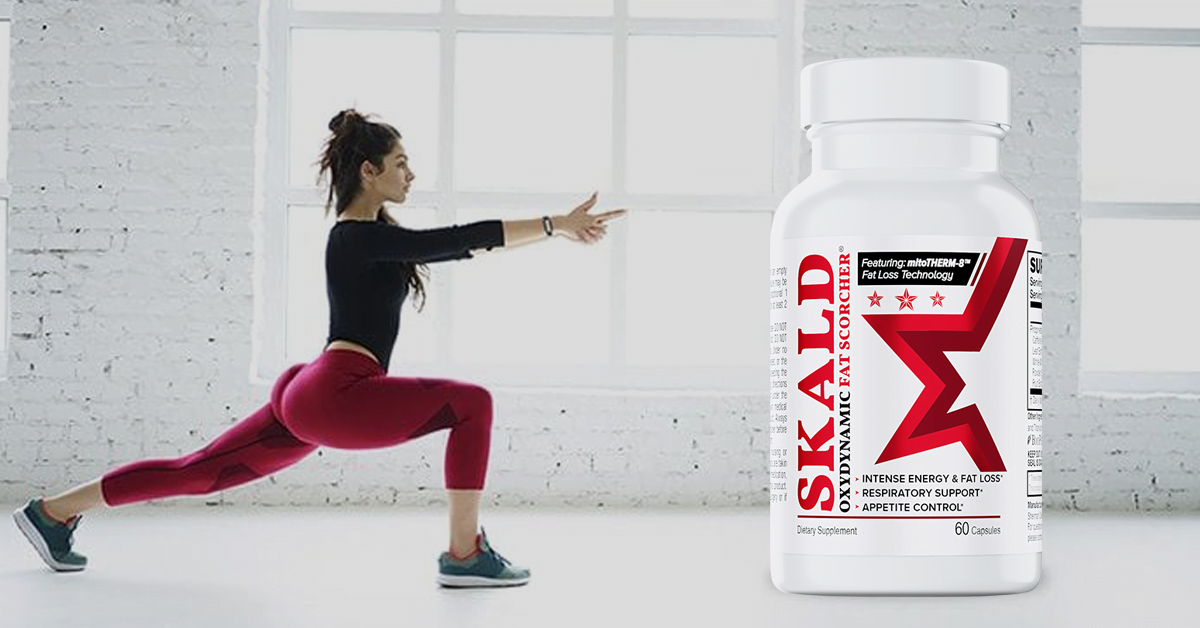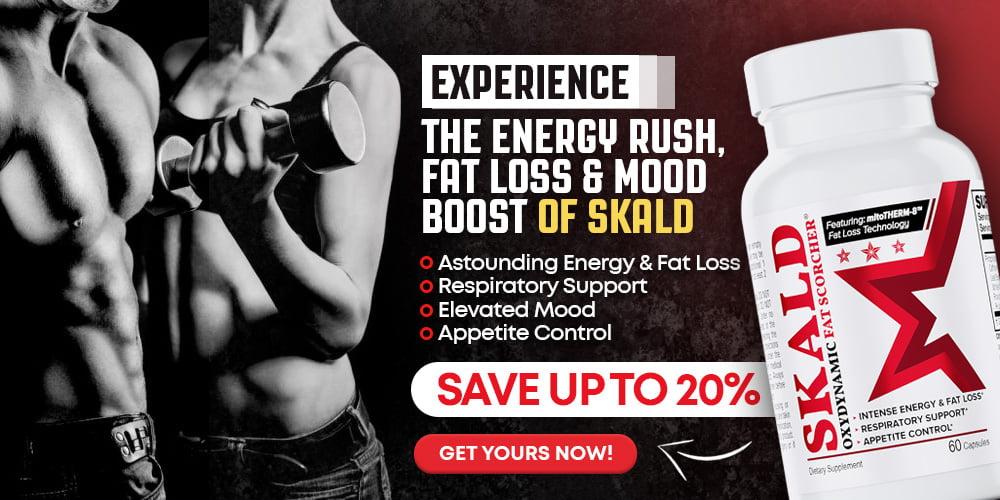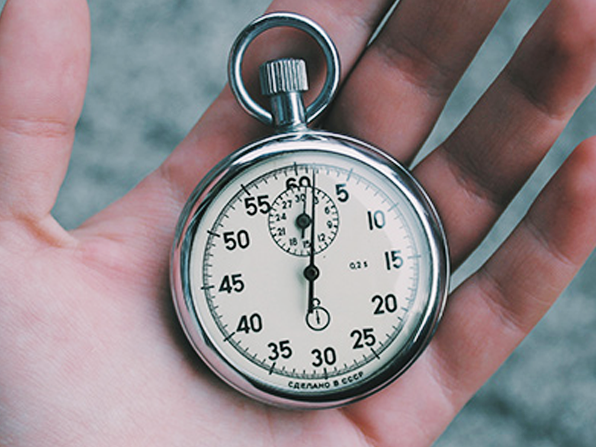
Ready to try the SKALD Fat Burner and take your results as high as they can go?
We've prepared some great tips to help you get the most out of BELDT Labs SKALD Oxydynamic Fat Scorcher.
But in case you still have any doubts about the effectiveness of our thermogenic fat burner…We'd like to answer one question first:
Does SKALD Fat Burner Really Work?
The SKALD oxydynamic fat scorcher is one of the most effective yet safe fat-burning products to ever hit the market. That was achieved with a combination of natural ingredients. A unique formula that helps you reduce body fat as it:
- Curbs your appetite
- Gives you more energy
- Boosts your metabolism
- Keeps you in a good mood
How to Get the Best Results from SKALD Fat Burner
While we are confident in the quality and effectiveness of the SKALD oxydynamic fat scorcher, we want to make sure you'll achieve your goals.
So, here are our tips for optimal results.
Follow SKALD Dosing and Cycling Protocols
First and foremost, please follow the directions on the product label to ensure proper dosage. If you haven't purchased SKALD yet, here are our serving recommendations:
» Start with 1 capsule in the morning on an empty stomach.
» If you don't feel the desired effect, take another capsule 6 hours later.
» Most tolerant users may add one more capsule in the morning.
In addition, you should avoid taking SKALD oxydynamic fat scorcher later during the day or in the evenings. After using the supplement for 6 weeks, take a break for 14 days.
We also recommend completely cycling off all other similar supplements or diet pills at least 3 days before using the SKALD fat burner.
This is to ensure the effects of our product can be fully isolated and not influenced by other ingredients and/or tolerance buildup from other sources.
Have a Consistent Exercise Routine
To get the most out of SKALD, pair it with a consistent workout routine by focusing on both cardio and strength training.
Cardio exercises, like running or cycling, help burn calories and improve your heart health. Strength training, like weightlifting or even something as simple as pushups, builds muscle and helps your metabolism.
Combining these workouts will boost fat loss and tone your muscles. As a general and balanced approach, we recommend:
Between 120 and 150 minutes of cardio each week and two days of strength training.
Don't Think Fat Burning is Always Related to Weight Loss
As we've seen in some of our customers' success stories, this confusion has previously led to frustration.
The problem is most weight loss supplement marketing will have you believe that staring at a scale is the best way to mark progress. And this isn't only misleading…
It can actually set you back because body weight is made up of more than just fat.
When using SKALD, you could burn fat but gain water weight and/or muscle at the same time.
Focus on the Right Macronutrients When Taking SKALD
Don't let the word confuse you, macronutrients is just a fancy term for protein, fat and carbohydrates. As you know, these are the three largest nutrients you consume (“macro” translates to “large”).
To get better results from SKALD, we recommend healthy eating. In other words, focus on macronutrients in their natural “whole” forms.
Here are some foods that are great sources of those, according to the Global Alliance for Improved Nutrition:
- Organs (liver, spleen, kidney, heart)
- Shellfish (mussels, oysters, shrimp, crab)
- Ruminant Meat (goat, beef, mutton, lamb)
In addition to the above, you can also eat leafy veggies, eggs, cheese, yogurt, and beans.
Whether your aim is fat loss, muscle gain, or maintenance, these types of foods will increase the effectiveness of SKALD and fat burners in general.
Keep Your Body Hydrated
Dehydration happens to be one of the leading causes of both fatigue and perceived hunger pangs (pangs are simply a response by the stomach when the body needs food, water, or both).
It doesn't take much to become dehydrated, and it significantly decreases the effectiveness of SKALD and thermogenic supplements in general.
As a general rule, The National Academy of Medicine recommends the following intake of fluids:
- For women is about 95 ounces per day.
- For men, it's roughly 135 ounces per day.
These numbers need to be adjusted upward the more you expel fluids through sweat and urine or if using a cell-volumizing supplement, like the BELDT Labs vasodilator.
Avoid Overly Processed Foods
Above, we mentioned what foods are the top sources of macronutrients. However, to support your health, weight loss goals, or get rid of fats, you must avoid overly processed (refined) foods.
Such foods contain added ingredients like sweeteners, sodium, and preservatives. These can raise your blood sugar quickly, leading to insulin spikes and fat storage. They may also cause water retention and high blood pressure.
To make better choices, shop for unrefined, single-ingredient foods around the grocery store's perimeter and avoid the middle aisles.
This approach will help improve the effectiveness of SKALD by promoting better overall nutrition.
Monitor Your Progress and Be Patient
Monitoring your progress when taking SKALD is key regardless of your fitness goals.
When it comes to fat burning, the easiest way to do it is to keep track of your weight, body measurements, and how your clothes fit.
It will help you see what’s working and where you might need to adjust your routine.
Taking photos every couple of weeks is also something we'd suggest. Many of our customers say this was a great motivator as they saw the results of their hard work over time.
Another way to gauge fat loss is by using fat calipers. While doing it yourself is possible, we recommend seeking the help of a certified fitness professional.
Last but not least, be patient with yourself. Fat loss or any body transformation takes time.
Don't listen to those false promises telling you that fat burners will deliver great results without exercising or a diet pill will help you lose weight without an actual diet.
How Long Does It Take to See Results from Using SKALD?
The time it takes to see results from using the SKALD fat burner can vary widely among individuals. While some users report noticeable changes within a few weeks, others say it took longer.
Supplements like SKALD are designed to support your fat burning efforts, not replace them.
Many satisfied customers shared that consistency in diet and exercise, alongside using SKALD, leads to better outcomes…Of course, we share their opinion.
Final Words
Be careful what you eat, drink enough water, stay consistent with your workout routine, and you'll get in better shape.
Follow these tips as much as possible, combined with motivation and the proper dosage of SKALD oxydynamic fat scorcher.
Trust the process, and soon, you'll find out how good it feels to see a toned body in the mirror.


